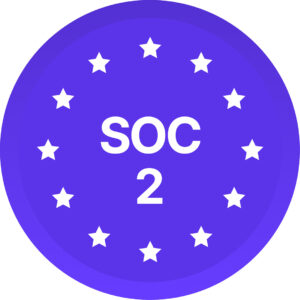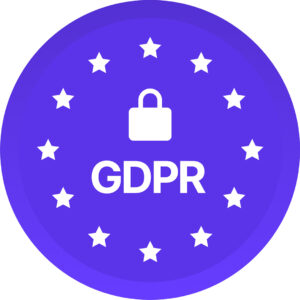(This article was previously published in the Winter 2021 edition of CPHR Alberta Magazine, the official publication of CPHR Alberta, and is reprinted with permission.)
“I AM AN ALLY.”
In social justice conversations, we hear this phrase often. It’s a mechanism or a term to make us feel we truly support and stand in solidarity with equity-deserving groups. But do we really know what an ally is and what steps we can take to be an ally? Most people know the word allyship and that it’s a good thing to be an ally, but the question that follows in most conversations is, “What can I do to be an ally? I don’t want to overstep or offend any group.” There is no one right answer. But hopefully, this short read will guide you in how to be an effective ally.
Let’s start with the terminology. The Anti-Oppression Network defines allyship as an active, consistent and arduous practice of unlearning and re-evaluating, in which a person in a position of privilege and power seeks to operate in solidarity with a marginalized group.1 Many words in that definition need to be unpacked, but the two key terms are power and privilege. Adding privilege to the famous Spider-Man quote, it would sound something like, “With privilege comes great power, and with great power comes great responsibility.” There are three things you should know about privilege:
1. Your privilege and power might change depending on your social/geographic location and who is in the room in each context.
Let’s look at this using a simple example of race and socioeconomic status. A white male may have more privilege than a Black male in navigating many Canadian institutions’ systems. Using the same example, the white male might have grown up in poverty and couldn’t afford an education. So, the white man might lack privilege in that socio-economic dimension compared to the Black man who did get an education and grew up rich. With this understanding, we know we all come with privileges but also lack privileges. It is easier to think about where we lack privilege or are oppressed, but it’s encouraged to learn to get comfortable with where we hold privilege. Having privilege and power can be good if you leverage it to make a positive change.
2. Privilege changes with dimensions of diversity.
It is not their fault that they were born with that privilege. The key question is, what can people do to make use of their privilege for the betterment of society?
3. People who hold privilege are not bad people.
Check your privilege often. Keep in mind this is not a right-or-wrong, us-versus-them or who’s-at-fault game. Understanding and knowing that you have power and privilege is a start toward using this power and privilege to make systemic change and break down systemic barriers.
Coming back to allyship, you recognize you have privilege and power. What’s next? Be an ally. Keep in mind that being an ally is a lifelong unlearning and re-learning process.
Here is what you can do to be an ally
- Check your biases: We all have biases, and we all need to check them. You’re probably thinking, “How many things do I have to check? First my privileges and now my biases?” The answer is yes. Building equitable, inclusive cultures takes time and a ton of effort.
- Listen: This is an art that will take time to develop. It is hard to stay quiet and listen in a world where we are all competing to be heard and have our opinions acknowledged and trusted. You’ll notice when you start to listen that you start hearing the points you missed, which may help you understand the root cause of the issue. So, next time you are deep in an argument or discussion, try to stay quiet, listen and ask questions.
- Don’t be a saviour: Equity-deserving groups don’t need help. They need space created where their voices are amplified and their experiences can be shared and validated.
- Marginalized communities are not a monolith: There are 7.6 billion people on this planet, with each person bringing their own experiences and lens of the world. If you know one person of colour from a particular culture, this doesn’t mean you know everything about the experiences of that culture or community.
- Educate yourself: There are tons of resources online — articles, blogs, webinars, podcasts, etc. Keep in mind, it is not the responsibility of marginalized communities to educate you.
- In the workplace:
- When someone has a good idea, repeat it, and acknowledge the author of the idea.
- Look around in a meeting, dinner conversation, or golf session with senior leadership. Are people from marginalized groups included or missing? Who isn’t at the table or in the room? Whose expertise is being de-valued?
- Believe others’ experiences. Just because you may not have had that experience doesn’t mean others haven’t.
- Did your colleague just say something inappropriate or racist to another colleague? Say something in the moment. Don’t offer sympathy to the victim after. You can say, “That was inappropriate, here is why…” If you get a response like, “Can’t you take a joke?” say, “I can. But this is not a joke, here is why…” If your organization has a diversity, equity and inclusion framework, you can also say, “XYZ is not tolerated within the DEI framework of this organization.”
- Sponsor someone. Is there someone on your team you think has potential? Introduce them to someone with power in your network or to your leadership team. Ask them, “How can I help you get to where you want to be?”
These strategies might not work in every situation. You will make mistakes even when you try your best or have the best intentions. The harmful impact should be prioritized over your good intention of not harming. We don’t have to be perfect. Striving for perfection is exhausting. So next time you make a mistake, ask yourself what you can do better next time, and then keep trying. The key to being an ally is not to stop.
References:
NOTE: To shed light on various topics and from multiple perspectives within the DEI space, we have collaborated with external contributors. As such, the views expressed in this article are those of the author and do not necessarily reflect those held by Diversio.

